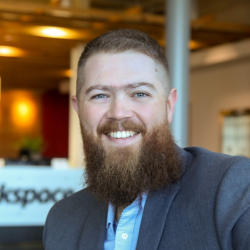Building A Cloud-Savvy Workforce
How to empower your team for success, retain talent, and stay competitive.
As seen on Forbes Technology Council.
As IT transformation initiatives continue to accelerate and organizations turn to hyperscalers and partners to leverage the full potential of the cloud, the ability to bring the workforce along for the ride has become more critical than ever. This is especially true in an era when adding new talent, assuming it can be found and retained, is an expensive proposition.
While organizations formulate their transformation strategies, one common mistake we see is an overemphasis on the technical aspects of the cloud or application selection at the expense of people issues. The risk companies run with this approach, which neglects workforce enablement until later stages of deployment, is adopting a sophisticated cloud infrastructure without fostering the internal skills to properly navigate it.
This is why making training part of the cloud blueprint up front and aligning it directly to the broader adoption strategy is so critical. By foregrounding the human issues involved in transformation, companies can ensure that as new capabilities are brought online or incorporated into the technical strategy, the organization is prepared to take advantage of them and is aware of potential technology sprawl. After all, what is the purpose of adding bells and whistles that employees are not trained to use or manage or building a new platform that introduces new points of weakness and complexity?
By dedicating resources and attention to skill development, staging training and actively promoting employee engagement, leading companies can enhance their ROI from cloud investments and avoid technical pitfalls.
The Risks Of An Absent Employee Enablement Program
Most cloud migration failures can be attributed to two primary factors. The first is an unsuccessful attempt to migrate, either by adopting a "lift and shift" mentality without introducing operational changes or making unsustainable technological choices. The second is the absence of adequate training, which often necessitates a significant shift in employee roles. These issues can result in a cascade of negative consequences, including employee confusion, dissatisfaction and demoralization, increased disruptions in platform operations and lower revenue.
More broadly, the consequences of a faulty cloud migration can taint perceptions of the overall transformation efforts within the organization, causing employees to doubt their purpose and significance. This not only impedes progress but also has the potential to predispose the next project to heightened internal resistance and opposition.
Delivering On The Workforce Promise igrating to the cloud is a multifaceted endeavor that goes beyond the mere relocation of your current technology stack. It encompasses a comprehensive transformation of practices, behaviors and attitudes. One of the keys to a successful migration is presenting the cloud as a catalyst for helping people work smarter and giving them the tools to achieve greater efficiency, flexibility, productivity and cost savings. Looking through this lens, effective workforce enablement is not just a best practice but a lynchpin in ensuring the success of the organization’s cloud investment.
When we work with clients to map out their cloud journeys, one of the things we stress is the need to strike a balance between migrating their existing assets in a systematic way while simultaneously empowering their teams to operate seamlessly within the new cloud environment. This close alignment between technology adoption and training/enablement is what separates those who thrive in the cloud from those who struggle.
Best Practices For Workforce Engagement
So, what are some best practices for workforce enablement?
First and foremost, it's essential to share your cloud architecture vision with your workforce to ensure transparency and alignment. Involving your people in decision-making at the beginning of the transformation process and maintaining touchpoints throughout will pay dividends as you get closer to your goals.
Secondly, it's important to consider your workforce's unique needs and capabilities. Establishing common standards across the organization is important and can serve as a foundation for mastering key concepts. But, this should be complemented by identifying where specialization is required in the form of targeted training and aligning the migration path with the capabilities of the various segments of your workforce.
During negotiations with service providers and hyperscaler partners, it's important to make workforce enablement a core part of the discussion. Most hyperscalers offer enablement programs and, for significant infrastructure deals, some may even provide funding for training initiatives. Leveraging these valuable resources can provide a leg up as you navigate the transformation journey and keep you from having to go it alone.
Finally, managing both legacy and emerging platforms concurrently can be a challenging juggling act, as they typically run on different technology stacks. To alleviate this burden, you might consider designating teams specifically focused on either the past or future platform, thus allowing for more focused support. Another option is to enlist the assistance of a third party to oversee the management of either the old or new platform, enabling your in-house team to maintain focus. Ultimately, asking your team to do everything without creating some focus will inevitably create frustration and slow excitement and adoption of the new platform.
However, the organization decides to approach cloud transformation, having early discussions and a clear focus on workforce enablement is absolutely essential to charting a successful course. A strong workforce enablement program, coupled with sustainable architecture, results in more motivated, better prepared and more highly skilled employees who are better equipped to shoulder new responsibilities and deliver the promise of the cloud.

10 Ways CIOs Can Gear Up for 2024
About the Authors

CTO - Public Cloud
Travis Runty
As a technologist with extensive global leadership experience in the cloud space, Travis boasts a strong track record of successfully building and leading high-performance engineering teams that deliver innovative solutions. Fostering an engineering culture has resulted in a collaborative, agile, and customer-focused work environment that consistently achieves business outcomes. With a deep understanding of hyperscalers, Travis effectively creates partnerships and aligns solutions to leverage their strengths, driving significant revenue growth and improved customer satisfaction. Committed to organizational success, Travis employs a strategic approach that harnesses emerging technologies and focuses relentlessly on delivering customer value. Travis has been in the Cloud Computing space for nearly 20 years.
Read more about Travis Runty